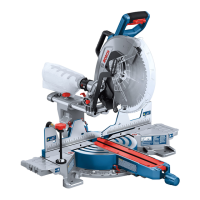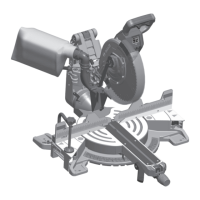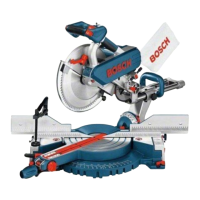The operation of any
power tool can result in
foreign objects being
thrown into the eyes,
which can result in se-
vere eye damage. Always
wear safety goggles that
comply with ANSI Z87.1 (shown on pack age) be-
fore commencing power tool operation.
6
SAVE THESE INSTRUCTIONS
Additional Safety Rules
GFCI and personal protection devices like
e
lectrician’s rubber gloves and footwear will
further enhance your personal safety.
Do not use AC only rated tools with a DC
power supply. While the tool may appear to
work, the electrical components of the AC
rated tool are likely to fail and create a hazard
to the operator.
Keep handles dry, clean and free from oil
and grease. Slippery hands cannot safely con-
trol the power tool.
Develop a periodic maintenance schedule for
your tool. When cleaning a tool be careful not
to disassemble any portion of the tool since
internal wires may be misplaced or pinched
or safety guard return springs may be im-
properly mounted. Certain cleaning agents
such as gasoline, carbon tetrachloride, ammo-
nia, etc. may damage plastic parts.
Some dust created by
power sanding, sawing,
g
rinding, drilling, and other construction ac-
tivities contains chemicals known to cause
cancer, birth defects or other reproductive
harm. Some examples of these chemicals
are:
• Lead from lead-based paints,
• Crystalline silica from bricks and cement
and other masonry products, and
• Arsenic and chromium from chemically-
treated lumber.
Your risk from these exposures varies, de-
pending on how often you do this type of
work. To reduce your exposure to these
chemicals: work in a well ventilated area, and
work with approved safety equipment, such
as those dust masks that are specially de-
signed to filter out microscopic particles.

